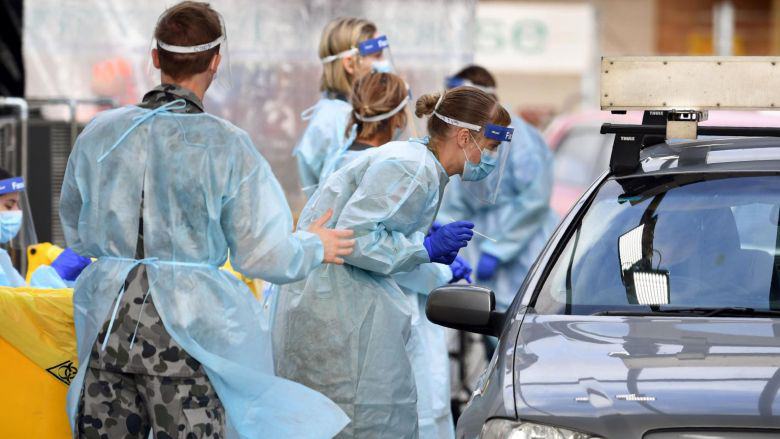This is the 89th article in the COVID-19 Global Roundup series. Here is the previous one.
Globally, the number of new coronavirus cases has reached a record high on Sunday at 212,326 cases in the last 24 hours, the WHO data showed, breaking the previous record of 190,566 that set on June 28.
With the United States, Brazil, and India showing the biggest increases, more than 11 million coronavirus cases have been recorded, and nearly 534,000 people have died so far around the world since the pandemic began, with around 5,200 of those deaths reported in the last 24 hours.
New cases reached an all-time high as many countries eased restrictions.
The biggest increase reported occurred in North and South America, which saw over 129,000 new cases in the last 24 hours, bringing the total in the region to nearly 5.58 million. Southeast Asia had 27,947 new cases with India climbed to the third and Bangladesh seeing the biggest increases in the region, while Australia is to close the border for the first time in one hundred years.

Supporters of U.S. President Donald Trump wave flags during Independence Day celebrations in Washington, US, July 4 2020. /Reuters
Supporters of U.S. President Donald Trump wave flags during Independence Day celebrations in Washington, US, July 4 2020. /Reuters
Closes border, in 100 years
The hard-hit Australian state of Victoria has recorded a death and its highest-ever daily increase in coronavirus cases as authorities are to close its border with New South Wales.
Victorian Premier Daniel Andrews said Monday that of the 127 new cases, 53 were among 3,000 people who have been confined by police to their apartments in nine public housing blocks since Saturday.
Andrews said the high number of cases after 74 were reported on Sunday reflected a daily record number of tests exceeding 24,500. He also announced that the state border with New South Wales would be closed from late Tuesday night in an agreement reached between the two state premiers and Prime Minister Scott Morrison.
The lockdowns were a "difficult but important step," according to top health officials.
The resurgence of the virus in Melbourne seemingly broke the optimism of Australians who plan to embrace their beaches again.
Andrews has pinpointed the origin of many infections to workers who overlooked the hotel quarantines and broke the advice and rules. More than 20,000 travelers have gone through 14-day quarantine in the state. Further, the public also became less vigilant, or, too optimistic as larger gatherings were permitted. Some cases stemmed from people with mild symptoms attending those gatherings, as per the local authorities.
Just as the health expert said, once the feeling got around that it was over - when it really wasn't - Victoria copped it.
Read more:
Australia's most populous state to close border, the first time in 100 years
01:00

Conflicting orders, changing guidelines
More than 2,910,600 people in the United States have been infected with the coronavirus, and at least 129,947 have died, according to JHU data. In the last 14 days, most cases are surging in the south and west of the country. Some places reimposed strict restrictions, yet others continue to reopen their economies. The coronavirus spread is uneven in the U.S. - Florida, Arizona, California, and Texas case amount rocketing with a lot of cases tracked back to clusters.
In the first four days of July, 15 states have reported record increases in new cases of COVID-19, which has infected nearly 3 million Americans and killed about 130,000, according to a Reuters tally.
This year's July 4, people worried that holiday parties might cause a further spike in infections that could overwhelm hospitals. They are overwhelmed by the mixed messaging from governments, which has been a major factor in people not following coronavirus mitigation recommendations. In addition to rising cases, an alarming percentage of tests are coming back positive.
The recent surge, most pronounced in Southern and Western states that were among the latest to impose mandatory business restrictions at the outset of the pandemic and the first to relax them, alarmed public health officials the consistent policies may need to be made to correctly guide the public given the country is not out of the crisis at all.
00:59

India, the third worst-hit nation
With a record single-day surge of 27,094 coronavirus infections and 676 fatalities - the biggest daily spike since the first case was detected in January - India's confirmed total COVID-19 cases count past 697,413, while the death toll rose to 19,963 on Sunday.
India overtook Russia with the world's third-highest number of novel coronavirus cases on Monday, as it saw over 20,000 infections for the third consecutive day. It is the eighth worst-hit in terms of deaths. In its daily morning update, the health ministry said the surge came as infections rose in the western and southern parts of the country amid heavy monsoon rains.

India's confiremd total COVID-19 cases count past 697,413 on July 5. /AFP
India's confiremd total COVID-19 cases count past 697,413 on July 5. /AFP
However, is it close to peak?
India imposed one of the world's strictest lockdowns in March to control the situation, but it has been eased in phases in recent weeks to restart economic activity. Indian Prime Minister Narendra Modi was forced to ease the curbs in June to rescue the country's economy that predicted to contract by 4.5 percent next month, according to IMF.
After overwhelming the capital city New Delhi and its financial center Mumbai, the coronavirus is now spreading to the country's vast hinterland. As millions of migrant workers have returned to their home villages: new routes of transmission of the virus might be created in rural areas where medical facilities are even more rickety.
Even as the country struggles in the fight against the virus, the true scale of the epidemic, there might not be easy to detect. The country has an incomplete death-registration system, low testing rates, little guidance or financial help, and fragile rural health infrastructure, which add so much pressure onto the containment measures. While the migrant workers conduct a large scale relocating due to economic insecurity, more risks just come in the country's face.
(With input from agencies)